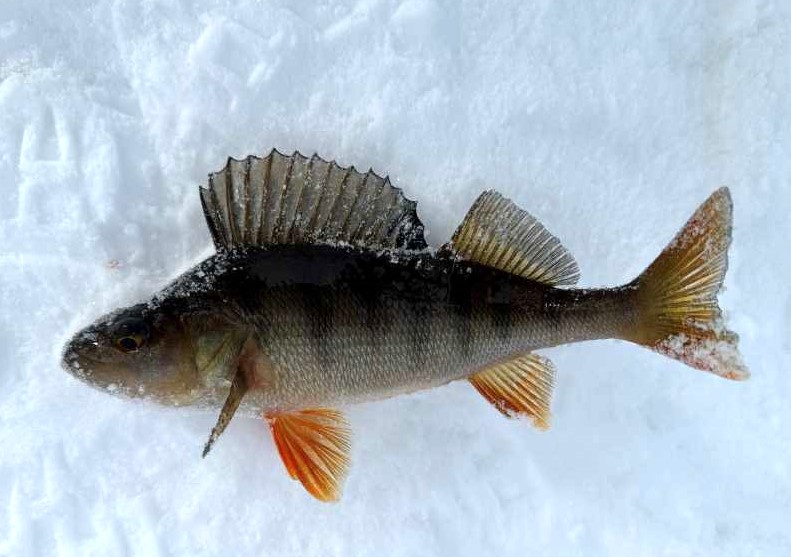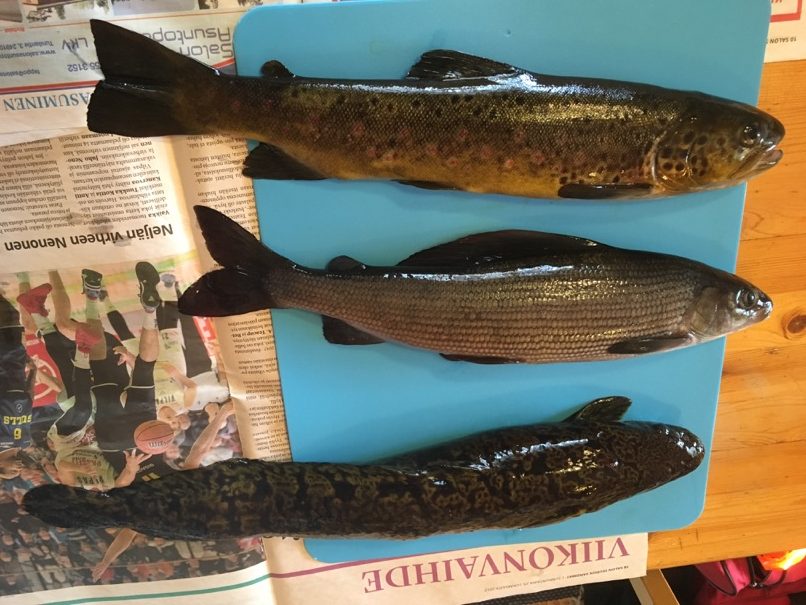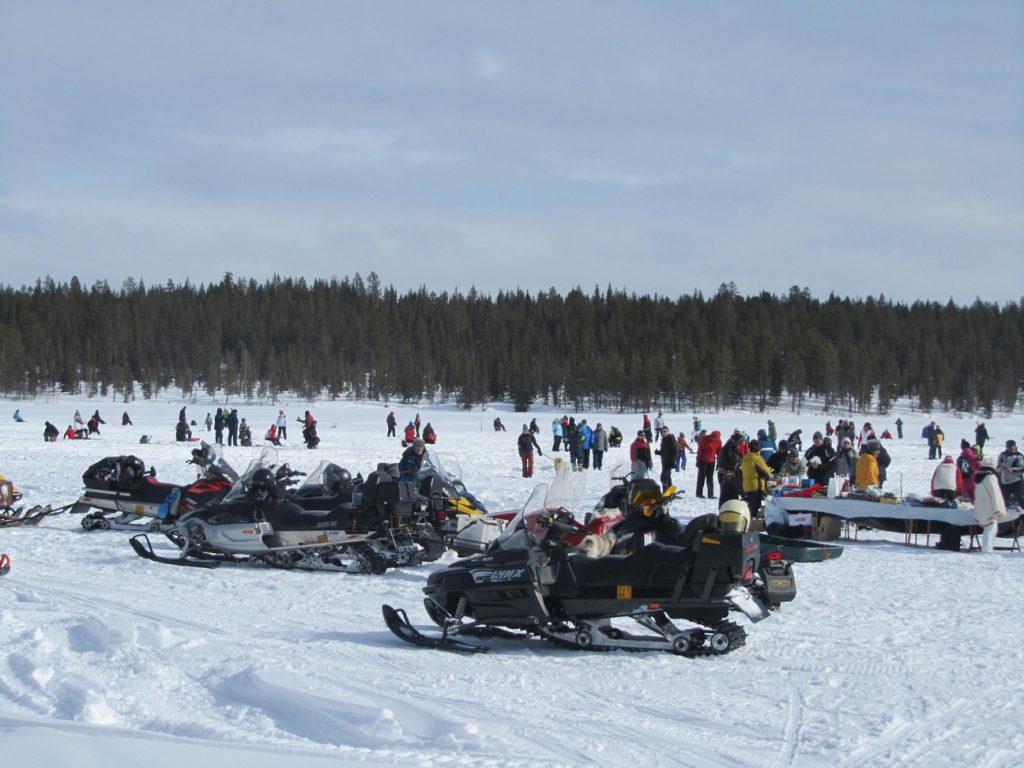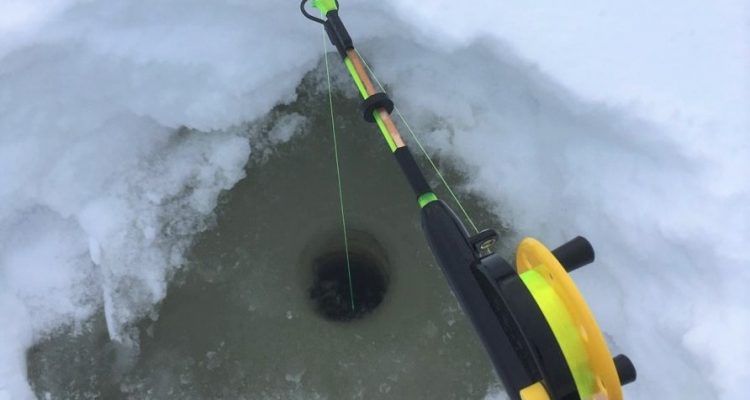Ice-fishing in Finland is a popular hobby, especially in spring when the sun is shining and temperatures are getting warmer. Ice-fishing season begins when there’s enough ice on lake or sea. Check the current ice conditions from the Finnish Meteorological Institute. You can also check the thickness of the ice with an ice drill. If you unsure about your safety, do not go on ice. Ice-fishing with a rod and jig is allowed by everyman’s rights, but there might be limitations in certain areas and on certain fish.
What is needed for ice-fishing in Finland and how it works
Warm clothes and shoes, hot coffee or hot chocolate (with a dash of mint vodka, if you prefer), and sunglasses are obviously needed. Then you need a rod and a jig for fishing. With the ice drill you make that hole in the ice. A sludge ladle is also important, because without removing the sludge, the hole will be frozen in few minutes and your chances of catching a fish slightly worse. A seat is very useful, because you normally spend several hours ice-fishing and you don’t want to be sitting on a cold snow or ice. If there is a lot snow on the ice, you will also need a shovel. You also might want to consider carrying some safety equipment such as ice picks with you.
First find a perfect spot for ice-fishing, preferably on a water area. Then drill a hole with the ice drill. Remove the sludge with the ladle. Bait your jig with larva or worm. The jigging techniques vary, but for example an upright jig is lowered about 30 cm above the bottom and then lifted about 30 cm up. This upwards movement makes the jig move attractively as the jig imitates a small fish. If there is no bite, lower the jig and try again.
If a fish bites on, you have to strike upwards and pull the fish through the hole on to the ice. Congratulations! You got yourself a lunch. At this point you would naturally check what type of fish you caught, measure it if needed, and make a decision to keep or release the fish.
Some of the species you’ll have a good chance of catching in Finland
Perch and roach are the most usual catches. There are a lot of perch in all waters and it is one of the most liked fish in the country. It is white and mild fish, and it comes in different sizes. Larger ones can be filleted and fried with butter (delicious!). Smaller ones can be skinned and used in soups or fried. Perch is easiest to catch near shorelines, and you may need to switch holes when looking for them. Once you find one, you are very likely to catch several from the same hole. The best perch fishing time is spring when there is more light under the ice.

Roach is not as appreciated as perch, but because it is so common, it is used for example as canned fish with simple spices such as oil, grain of salt, pepper and bay leaf. We have sometimes canned fish with a pressure canner, but it is somewhat intimidating process, because improper home canning creates the perfect environment to grow botulism bacteria.
Less common but highly valued catches include powan and rainbow trout. Powan is a whitefish that likes clear-watered and cold lakes. It can be recognized from its silver color, darker fins, small head and light-colored eye, unlike roach, which has red eyes. Powan is usually bigger than perch, but light fishing tackles are enough to catch them. Rainbow trout is a bigger fish, usually 1-2 kg, and catching them is possible in some rapids or lakes. You should note that you usually need a fishing permit for rainbow trout.
The middle of winter and at night is a good time to fish burbot. And burbot makes an excellent soup. You should use heavy ice fishing tackles, bigger ice drill and strong fishing line to pull a burbot on the ice.

Late winter is good time to fish pike. Pike can be found throughout the country and it is the second most common game fish after perch. For pike fishing you will need a stiff rod, strong line and a cast. Removing all the bones from a pike takes some technique, but another option is to cook pike balls by grinding the meat with smallest bones to a smooth paste.
Fun and games at the ice-fishing competitions
Ice-fishing competitions are common as it brings a social aspect to fishing. In many cities or villages there are fun ice-fishing competitions organized on a yearly basis, but there are also more professional fishing competitions in a national level. Check out for example Enontekiö Ice Fishing Week 27 April -3 May 2019 if you want to take part.


